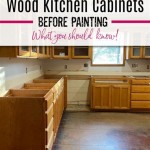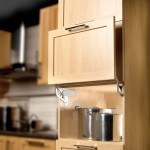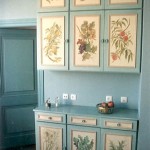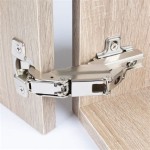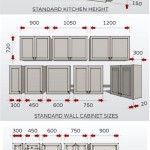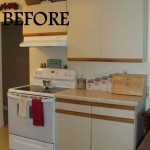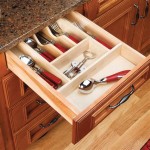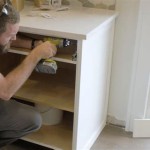Inexpensive High Quality Kitchen Cabinets: Balancing Cost and Durability
Kitchen renovations often represent a significant financial investment for homeowners. Cabinetry, in particular, frequently constitutes a substantial portion of the overall budget. The desire for high-quality, aesthetically pleasing cabinets often clashes with the need to maintain budgetary constraints. Fortunately, the market offers a variety of options that allow homeowners to achieve a balance between cost-effectiveness and durability without sacrificing visual appeal. Selecting inexpensive kitchen cabinets that also demonstrate high quality requires careful research, informed decision-making, and a clear understanding of available materials and construction methods.
The term "inexpensive" in this context does not necessarily equate to "cheap" or "low-quality." Instead, it refers to cabinets that offer excellent value – a favorable ratio of quality and features to cost. Identifying these cabinets involves evaluating the materials used, the construction techniques employed, and the reputation of the manufacturer or supplier. Furthermore, considering alternative sourcing options, such as ready-to-assemble (RTA) cabinets or exploring salvage and surplus markets, can significantly reduce expenses without compromising on the desired outcome.
Understanding Cabinet Materials and Their Impact on Cost and Quality
The material used in cabinet construction directly influences both its price and its longevity. Solid wood, plywood, medium-density fiberboard (MDF), and particleboard are the most common materials used in cabinet construction, each possessing distinct characteristics that affect their suitability for different applications and budgets.
Solid wood is often perceived as the premium option, known for its natural beauty and durability. However, solid wood cabinets tend to be the most expensive, and they are susceptible to warping and cracking due to changes in humidity and temperature. Certain wood species, such as maple, oak, and cherry, are more commonly used than others due to their structural integrity and aesthetic properties. When opting for solid wood, it is critical to ensure proper sealing and finishing to protect the wood from moisture damage.
Plywood offers a more stable alternative to solid wood, resisting warping and cracking. Constructed from multiple layers of wood veneer glued together, plywood provides a strong and durable base for cabinets. While more expensive than particleboard or MDF, plywood is generally more affordable than solid wood, making it a viable option for those seeking a balance between cost and quality. Look for plywood with a high number of plies, as this indicates greater strength and stability.
MDF is an engineered wood product made from wood fibers bonded together with resin under high pressure. It provides a smooth, consistent surface that is ideal for painting or applying veneers. MDF is more resistant to warping than solid wood and is generally less expensive than plywood. However, MDF is susceptible to water damage and should be used in areas with low moisture exposure. It is frequently used for cabinet doors and drawer fronts due to its smooth surface and ability to accept paint or other finishes effectively.
Particleboard is the most affordable material used in cabinet construction. It is made from wood chips and sawdust bonded together with resin. While particleboard is inexpensive, it is also the least durable option. It is highly susceptible to water damage and can easily crumble or warp. Particleboard is typically used for cabinet boxes and shelving in budget-friendly cabinets. When selecting cabinets with particleboard components, ensure they are properly sealed and laminated to protect them from moisture.
Evaluating Cabinet Construction and Hardware for Longevity
The construction methods employed and the quality of the hardware used significantly impact the overall durability and longevity of kitchen cabinets. Look for cabinets with sturdy joinery, durable hinges, and smooth-gliding drawer slides. Investing in cabinets with well-constructed boxes and reliable hardware ensures that they will withstand daily use for many years.
Dovetail joints are considered the strongest type of joinery for drawer boxes. They feature interlocking pins and tails that create a secure and durable connection. Mortise and tenon joints are another robust option, involving a projection (tenon) that fits snugly into a corresponding hole (mortise). Dowel joints, which use wooden dowels to connect two pieces of wood, are a less expensive alternative that can still provide adequate strength. Avoid cabinets with stapled or glued joints, as these tend to be weaker and less durable.
Hinges play a crucial role in the functionality of kitchen cabinets. Look for hinges made from solid metal, such as steel or brass, rather than plastic or thin metal. Soft-close hinges are a desirable feature that prevents doors from slamming shut, reducing wear and tear on the cabinets. Adjustable hinges allow for fine-tuning the alignment of cabinet doors.
Drawer slides should be sturdy and smooth-gliding. Ball-bearing slides are the most durable and reliable option, providing smooth and effortless drawer operation. Full-extension drawer slides allow you to access the entire contents of the drawer, while soft-close drawer slides prevent drawers from slamming shut. Under-mount drawer slides offer a cleaner, more streamlined look, as they are concealed beneath the drawer box.
The thickness of the cabinet box material also affects its strength and stability. Look for cabinets with at least ½-inch thick plywood or MDF for the sides, top, bottom, and back. Thicker materials provide greater resistance to warping and sagging.
Strategies for Sourcing Inexpensive High Quality Cabinets
Several strategies can be employed to source inexpensive kitchen cabinets without compromising on quality. Exploring ready-to-assemble (RTA) cabinets, considering stock cabinets, and investigating salvage or surplus markets can yield significant cost savings.
Ready-to-assemble (RTA) cabinets are shipped flat-packed and require assembly by the homeowner or a contractor. RTA cabinets are generally less expensive than pre-assembled cabinets because they save on labor and shipping costs. However, RTA cabinets require time and effort to assemble, and it is crucial to follow the instructions carefully to ensure proper assembly. Look for RTA cabinets made from high-quality materials with sturdy joinery and durable hardware.
Stock cabinets are pre-manufactured in standard sizes and styles. They are readily available and typically less expensive than custom cabinets. While stock cabinets offer limited customization options, they can be a budget-friendly choice for homeowners who are willing to work within the available sizes and styles. Many manufacturers offer a wide range of stock cabinet options, allowing homeowners to find a style that suits their taste and budget. Careful planning and measurement are essential when using stock cabinets to ensure a proper fit in the kitchen.
Salvage and surplus markets can be a treasure trove of discounted kitchen cabinets. These markets often sell cabinets that have been discontinued, damaged, or are leftover from previous projects. While the selection may be limited and require more searching, significant savings can be achieved. Thoroughly inspect any salvaged or surplus cabinets before purchasing them to ensure they are in good condition and meet your requirements.
Shopping during sales and promotions can also help reduce the cost of kitchen cabinets. Many retailers offer discounts on cabinets during certain times of the year, such as holidays or end-of-season sales. Comparing prices from different retailers and manufacturers is also essential to ensure that you are getting the best possible deal. Online retailers often offer competitive pricing and a wider selection than brick-and-mortar stores.
Finally, consider painting or refinishing existing cabinets instead of replacing them. If your existing cabinets are structurally sound but outdated or worn, a fresh coat of paint or a new stain can dramatically transform their appearance. This option is significantly less expensive than purchasing new cabinets and allows you to customize the color and finish to your liking.
By carefully considering the materials used, evaluating the construction methods, and exploring alternative sourcing options, homeowners can successfully find inexpensive high quality kitchen cabinets that meet their needs and budget. Detailed research and informed decision-making are key to achieving a beautiful and functional kitchen renovation without breaking the bank.

Affordable Kitchen Cabinet Ideas The Home Depot

And Affordable Kitchen Cabinets For A 10 By

How To Get A Stunning Kitchen On Budget

Affordable Kitchen Cabinets On A Budget Revamp Your Without Breaking Th

Discount Kitchen Cabinets Rta Cabinetselect Com

Kitchen Cabinets 80 Styles In Stock Best Free
How To Find Gorgeous Yet Affordable Kitchen Cabinets

Affordable Kitchen Cabinets On A Budget Revamp Your Without Breaking Th

Kitchen Cabinets The Home Depot

7 Ways To Make Your Kitchen Cabinets Look Expensive

